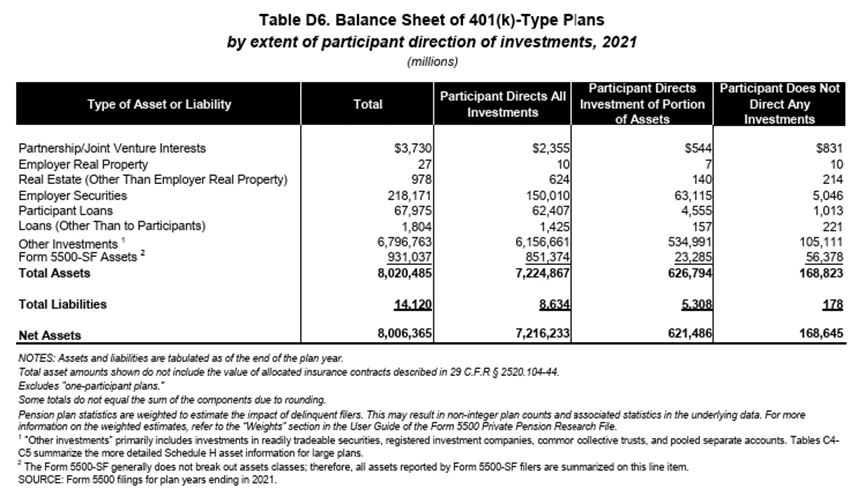On August 7, Trump signed an executive order that expanded the investment menu of America's largest retirement pool—the 401(k) plan—from a 'traditional three dishes and one soup' to an 'alternative buffet', with new items including private equity, real estate, and digital assets (Bitcoin, Ethereum, etc.). This is a historic first, allowing long-term funds amounting to $9 trillion, covering 90 million Americans, to begin accessing the crypto market. Although this 'elephant' may take six months to two years to truly step in, once it starts to move slowly, this stable and lasting buying interest may be the source of future 'slow bull' trends in crypto spot markets.
What is a 401(k) retirement plan: Employer-initiated, employee participation, automatic deductions, long-term savings.
A 401(k) is a long-term retirement savings account set up by U.S. employers for employees, offering tax benefits. Employees can defer a portion of their salary from taxes and directly invest it into this account, to be withdrawn later in retirement. Employers prepare an investment list (usually with 20-30 funds), and employees decide how much of their salary to contribute (e.g., 6%), then select funds and allocate proportions from the list. Salaries are automatically deducted, and employers typically also provide a 'match'—for example, if you contribute a certain amount, they will add half of that as a benefit.
401(k) Plan Decision-Making Power: Employers Call the Shots and Must Be 'Prudent Stewards'
In a 401(k), employers have significant authority to decide which funds can be included in the list, while employees can only choose from the list and cannot add their own options. When selecting fund companies or custodians, employers must adhere to the 'prudent person rule'—meaning they must be as careful as if they were managing their own family's finances. If a wrong choice leads to employee losses, employers may bear legal responsibility.
The scale of the 401(k) plan is enormous: approaching $9 trillion, with over 90 million participants.
U.S. Labor Department data shows that the total assets of 401(k) plans were approximately $8 trillion in 2021; statistics from the Investment Company Institute indicate that by the first quarter of 2025, this figure had reached $8.7 trillion. The White House also revealed that more than 90 million people across the U.S. are using this plan.

How significant is this change?
A historic first: Previously, the investment list of a 401(k) did not include crypto assets at all, but this policy has opened the door for the first time.
Potential funding pool: Even if only 2% of 401(k) funds flow into crypto, based on $9 trillion, that would mean $170 billion in new buying interest—while currently the total for global crypto spot ETFs and listed reserves is only $260 billion.
Market Impact: Once this long-term capital enters the market, it will be enough to change the structure of the crypto market—from being primarily short-term trading to relying more on long-term capital for price discovery, forming a steady upward 'slow bull' pattern.
Analyst Opinion: Even if 401(k) plans only allocate 2% of pocket money, the crypto market could instantly gain $170 billion—this is nearly equivalent to two-thirds of the current total of crypto spot ETFs and listed reserves.
The funds' implementation will require three steps.
Don't rush to celebrate; the money won't just flood in tomorrow. A landing period of at least six months to two years is expected.
The Labor Department will first issue details, clarifying how 401(k) plans can invest in alternative assets, the limits on proportions, product disclosures, etc.
Service providers design fund products that comply with regulations and include crypto assets.
Employers decide whether to add these new funds to the investment menu, and employees then decide whether to allocate funds.
Which type of crypto asset is most likely to enter the market first?
The call for a crypto spot ETF is the strongest, as they are regulated by the SEC, have strong compliance, stable custody and valuation mechanisms, and good liquidity. They are likely to be included in target date funds (TDF) or balanced funds, with a proportion possibly below 5%, but the impact is still enormous.
Why is this different from 2020?
In 2020, during Trump’s term, the Labor Department also hinted at allowing 401(k) plans to access private assets, but because it was a spontaneous action by the department and private assets lacked liquidity, it ended up being a lot of noise with little impact. This time is completely different.
The President personally signed the executive order, giving it more weight.
Crypto ETFs have good liquidity and high acceptance among retail investors.
Policy is coordinated among the Treasury, SEC, and other parties, representing true top-level design.
Bull markets are fleeting; what you lack is never opportunity, but the courage to pull the trigger! Follow Xing Ge, and let me assist you.#BTC重返12万 #特朗普加密新政 #ETH突破4300

